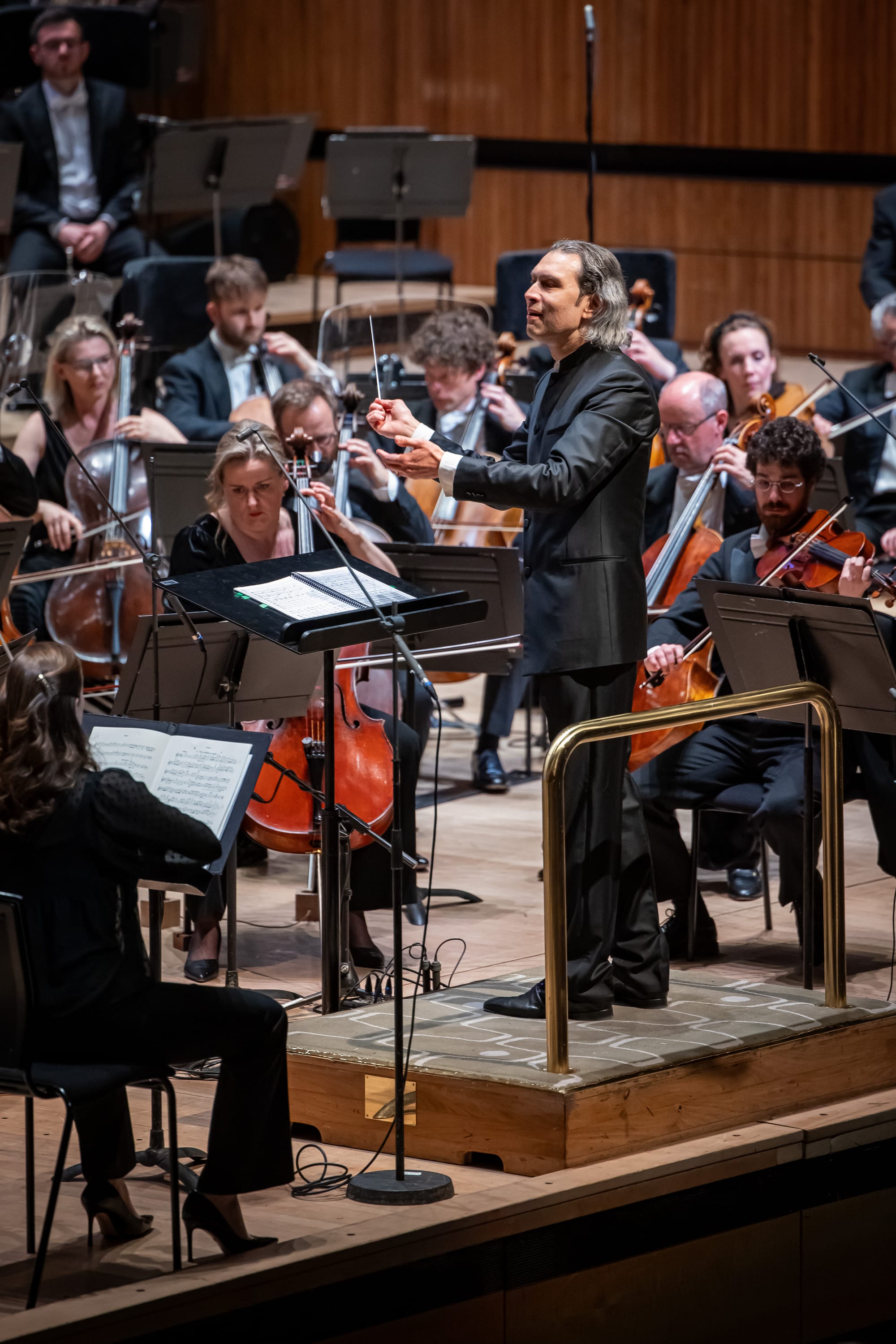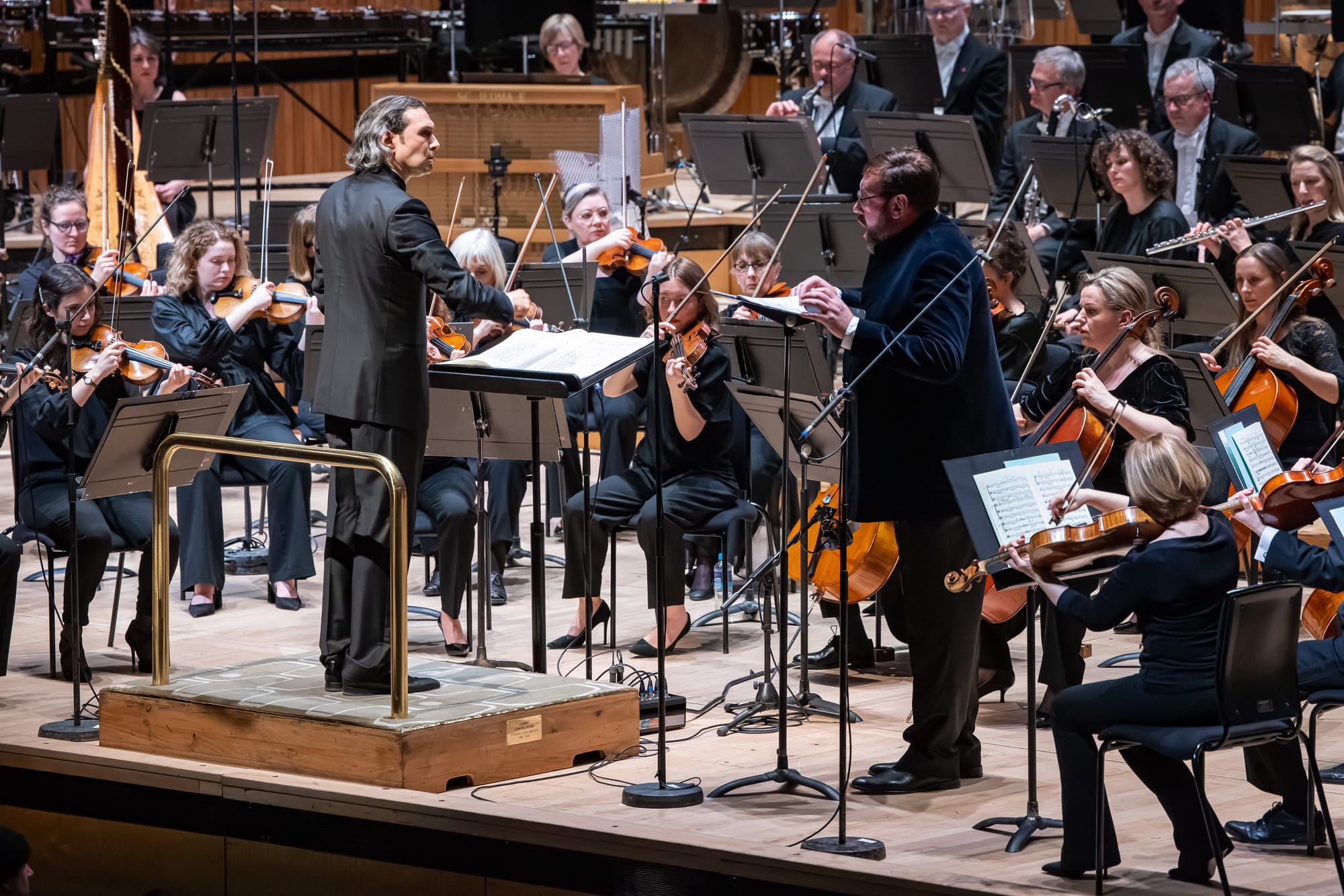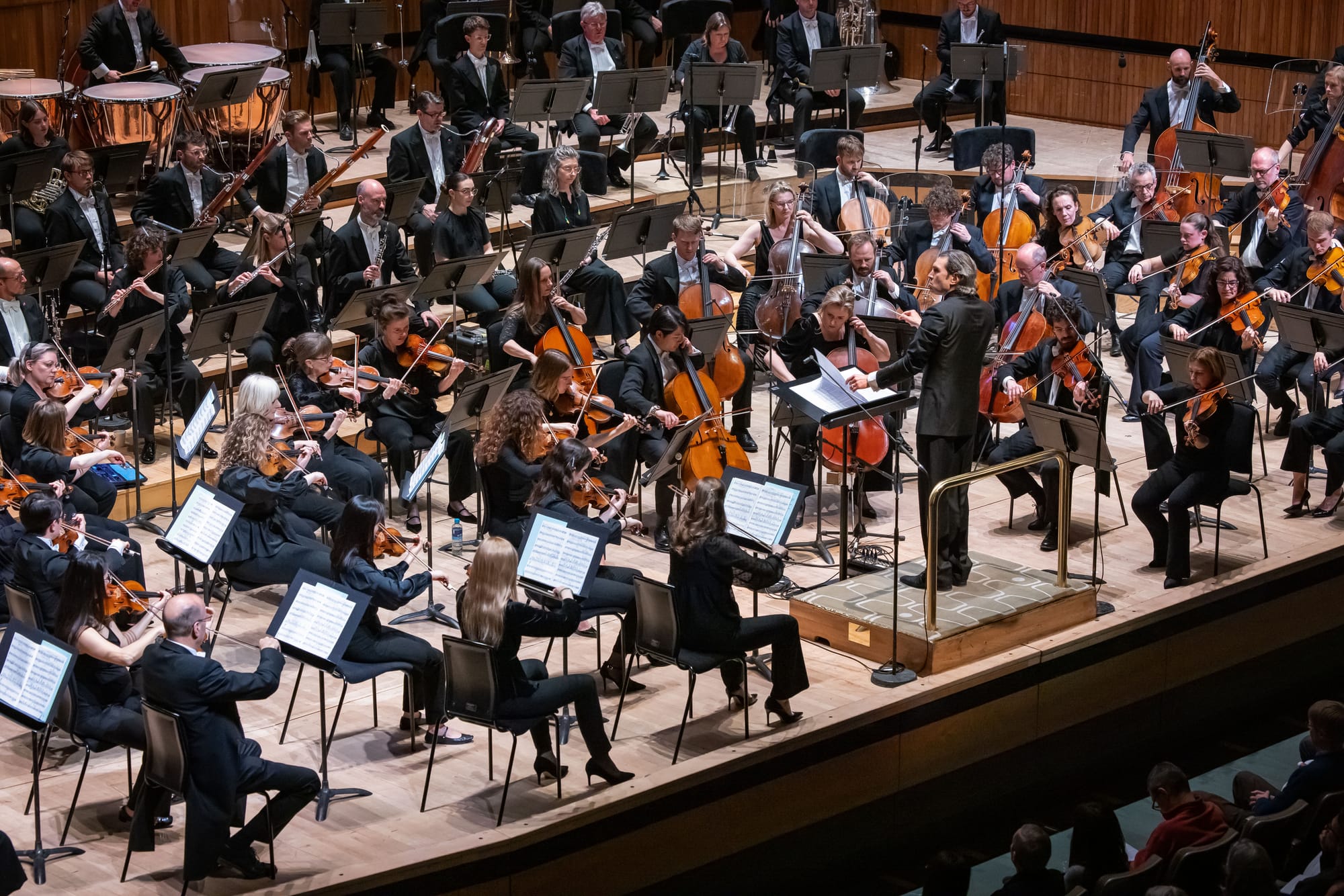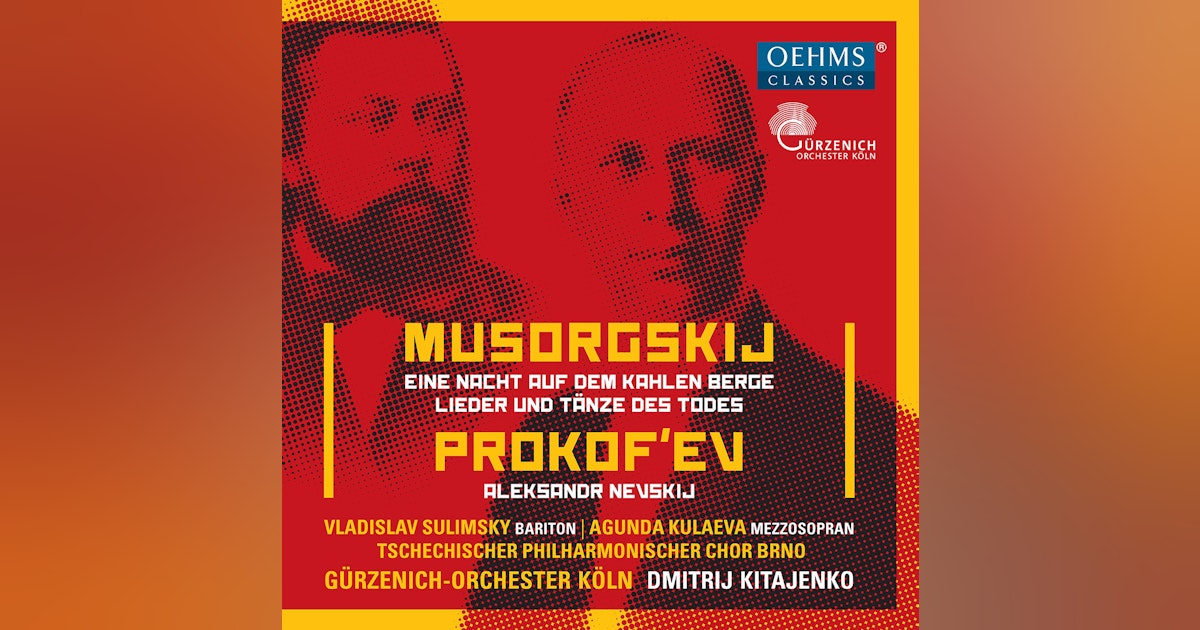The London Philharmonic shine in Lyatoshynsky

Prokofiev, Mussorgsky (arr. Denisov), Lyatoshynsky. Matthew Rose (bass); London Philharmonic Orchestra / Vladimir Jurowski (conductor). Royal Festival Hall, London, 2.4.2025
Prokofiev Selection from Semyon Kotko, Op. 81bis (1938-9/1943)
Mussorgsky (arr. Denisov) Songs and Dances of Death (arr. 1983)
Lyatoshynsky Symphony No. 3 (1951)
Part of the LPO’s Moments Remembered series, this concert offered a eal rarity: the opportunity to her Boris Lyatshynsky’s Third Symphony live, prefaced by excerpts from Prokofiev’s Semyon Kotko and some Mussorgsky Death Songs.
The las time I heard (he only itme I heard) Prokofiev’s Semyon Kotko was in a fully staged performance held at Covent Garden but with the Kirov forces conducted by Valéry Gergiev (they also did War and Peace).It was a stunning production (the Philips recording by Gergiev has the memorable gas masks on the front cover: review). Viktor Lusiuk sang Semyon, with Lyudmila Filaova as his mother and Olga Savova as Frosya (Semyon’s sister). Here, we heard six of the seven movements of the orchestral suite, beginning with the lovely ‘Introduction’. It is interesting to compare Jurowski with Gergiev’s recording (of the time of those performances - Gergiev is conventional Prokofiev and a bit too cushioned; Jurowski’s textures were more lithe, and he seemed to be keen to point out h Neo-Baroque aspects to the music. There was real intensity to the RFH performance; gaps between phrases had real tension through them; the intensity continued with ‘Semyon and his mother’, darkly hued. Accents seemed to have a Mussorgsky-like import, pitted against typically long, lyrical Prokofiev lines. The selection omitted ‘The Betrothal’ and moved to the glorious ‘The Southern Night’. Jurowsk’s shaping of themes is impeccable: it just sounds so right, and, as so often, e LPO played their hearts out for him. The brass and woodwind here impressed, not least the trumpets (superb throughout, led by Paul Beniston). ‘Execution’ is motoric and wild, strings notable in the unanimity at (terrific) speed. ‘The Village is Burning’ is quite expansive, and not quite as incendiary as the title implies. It is the final ‘Funeral’ (final here; there is one more movement in the suite) that found everything fall truly into place: Jurowski’s long-range vision paying huge dividends, Prokofiev’s scoring is so imaginative (and Jurowski’s elucidation made sure we heard it in all its glory). Pounding timpani seemed the orchestra’s heartbeat, unstoppable, relentless.

The concert melded Russia and the Ukraine: Kotko is set there, and therefter Mussorgsky met the Ukrainian composer Boris Lyatoshynsky (1895-1968). Mussorgsky also met Edison Denisov, who orchestrated the Songs and Dances of Death (‘Pesni y plyaski smerti’). This is quite simply one of the most incredible orchestrations I have ever heard, so full of imagination and yet true to Shosttakovich. Some readers might be aware of Dmitri Kitajenko’s recording with the Gürzenich Orchestra, Cologne with Vladislv Sulimsky as bass soloist (MusicWeb review). It is superb; but so was Rose, absolutely immersed in the music, singing with gloriously lush tone and superb diction. Both Rose and Jurowski’s phrasings were in perfect acccrd with each other, and with the music itself. They pinpointed the underlying lyricism, while Jurowski underlined the imdividualities of Denisov’s scoring (aching bassoons in the first song, ‘Serenade’ for example). The ‘Serenade’ was magnificent, capturing folksy hints. The sheer confidence of Denisov’s orchesration seemed to give the music a dark glow. And if anything could convince one that Rose would be a great Boris Godunov, it was the delivery of the ‘Trepak,’ a near parlando of terrific power set against Jurowski’s preternaturally disciplined orchestra. Finally, ‘The Feld Mashall,’ awesome in ts power, Rose absolutely able to maintain audibility over the orchestra’s dynamic: here is Death on the battlefield, an unforgettable image.

And so to the real treat: Boris Lyatshynsky’s Third Symphony. There are a couple of major recordings of this that have helped the work’s currency, but I really doubted I would ever hear it live: the Naxos/Marco Polo Theodor Kuchar with the Ukrainian National Symphony Orchestra (review), and Kirill Karabits with the Bournemouth Symphony Orchestra on Chandos (review). Written between 1948 and 1951, it is a vast, serious work of firm symphonic structure. The intent is clear at the opening, and the brass attack was, as I wrote in my notes at the time, ‘insanely accurate’; and not just once, either, but throughout. Chords soon ricocheted across the orchestra. To sum up Lyatoshynsky’s world, this is High Romanticism, but bursting at the seams, and Jurowski was there for it. The music’s darkness was beyond doubt. Possibly Jurowski’s finest achievement, though, was in his deft handling of Lyatoshynsky’s tempo juxtapositions .
The Andante con moto is fascinating in its harmonic spectrum, encapsulated by the sophistication of the opening woodwind chords against harp. Folk melodies, heard in the first movement, continue here . Chord sequences are endlessly fascinating, as the music morphs from unsettled tranquility to a march that brought outrageous passion from the strings. A remarkable tone-pom in its own right, it cedes to a Scherzo that here was the epitome of its indicator: ‘Allegro feroce’. Low strings, angular, gave a forward momentum that formed the backdrop for screaming brass and angular woodwind. A pointillist accelerando was viscerally exciting; meanwhile, brass as a unit emerged as creamy in extremis. The finale, an ‘Allegro risoluto,’is of huge ambition and remarkable orchestral virtuosity – a virtuosity fully met by the LPO. The scoring is brilliant: G-string violins against reedy fortissimo bassoons, perfectly blended, fanfare-like brass. Darkness exists here, too, and Jurowski paced the movement perfectly to allow the radiant (and noisy) conclusion to resonate on.
A phenomenal performance of a wonderful symphony.
The Kotko is available on Amazon here; the Kitajenko Shostakovich is here; theLyatoshynsky Naxos is here.



